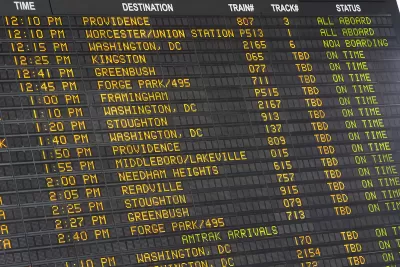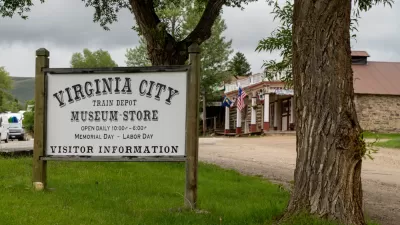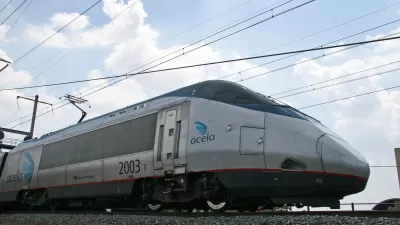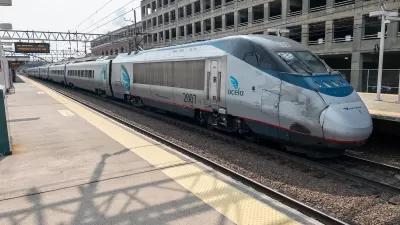High-speed rail may still be a distant vision in the United States, but conventional passenger rail is having a resurgence.

Writing in Fast Company, Benjamin Schneider offers a hopeful vision of U.S. passenger rail, which is being infused with historic levels of federal funding. Schneider admits that the $66 billion federal investment in trains “will not yield revolutionary changes to passenger rail,” it will help improve and expand service for many U.S. train riders. “On several rail-friendly corridors—big city pairs less than 300 miles apart—train travel will go from an eccentric travel option to a perfectly logical one.”
Pointing to new train cars on Amtrak’s Midwestern lines, Schneider writes, “State-of-the-art rolling stock is the most vivid sign that train travel is no nostalgia trip. It’s modern, it’s efficient, it’s comfortable, and it’s only getting better.”
Schneider points out that improvements to conventional rail—rather than the more glamorous high-speed rail—“will cumulatively impact the lives of many more Americans, much sooner, than multigenerational infrastructure projects like California High-Speed Rail.”
The article lists several impactful projects in states across the country, such as Colorado’s new Front Range Line, expanded service between St. Paul and Chicago, and improvements to a popular Southern California train line threatened by coastal erosion.
FULL STORY: Amtrak is having a renaissance across the United States

Alabama: Trump Terminates Settlements for Black Communities Harmed By Raw Sewage
Trump deemed the landmark civil rights agreement “illegal DEI and environmental justice policy.”

Planetizen Federal Action Tracker
A weekly monitor of how Trump’s orders and actions are impacting planners and planning in America.

The 120 Year Old Tiny Home Villages That Sheltered San Francisco’s Earthquake Refugees
More than a century ago, San Francisco mobilized to house thousands of residents displaced by the 1906 earthquake. Could their strategy offer a model for the present?

Ken Jennings Launches Transit Web Series
The Jeopardy champ wants you to ride public transit.

BLM To Rescind Public Lands Rule
The change will downgrade conservation, once again putting federal land at risk for mining and other extractive uses.

Indy Neighborhood Group Builds Temporary Multi-Use Path
Community members, aided in part by funding from the city, repurposed a vehicle lane to create a protected bike and pedestrian path for the summer season.
Urban Design for Planners 1: Software Tools
This six-course series explores essential urban design concepts using open source software and equips planners with the tools they need to participate fully in the urban design process.
Planning for Universal Design
Learn the tools for implementing Universal Design in planning regulations.
Clanton & Associates, Inc.
Jessamine County Fiscal Court
Institute for Housing and Urban Development Studies (IHS)
City of Grandview
Harvard GSD Executive Education
Toledo-Lucas County Plan Commissions
Salt Lake City
NYU Wagner Graduate School of Public Service





























